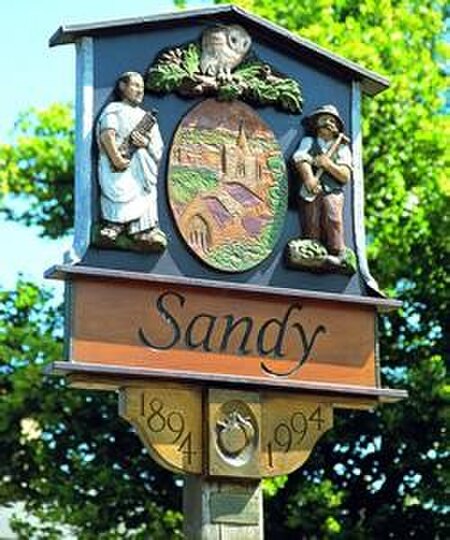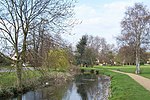Sandy, Bedfordshire

Sandy is a town and civil parish in Central Bedfordshire, England. It lies 8 miles (13 km) to the east of Bedford, 18 miles (29 km) to the south west of Cambridge and 43 miles (69 km) north of Central London. It had a population of 12,171 at the 2021 census. The town takes its name from a low range of sandy hills on the eastern side of the town, which form part of the Bedfordshire Greensand Ridge. The main part of the built-up area lies between the hills to the east and the River Ivel to the west. The A1 road skirts the western edge of the town. Sandy railway station is on the Great Northern route between London and Peterborough, with the railway running along the eastern edge of the built-up area. The parish also includes the hamlet of Beeston, which straddles the A1 to the south-west of the town. The headquarters of the Royal Society for the Protection of Birds (RSPB) is at The Lodge at Sandy Warren in the hills to the east of the town, where it has been based since 1961.
Excerpt from the Wikipedia article Sandy, Bedfordshire (License: CC BY-SA 3.0, Authors, Images).Sandy, Bedfordshire
Queens Road,
Geographical coordinates (GPS) Address Nearby Places Show on map
Geographical coordinates (GPS)
| Latitude | Longitude |
|---|---|
| N 52.131 ° | E -0.297 ° |
Address
Queens Road
Queens Road
SG19 1HD
England, United Kingdom
Open on Google Maps







